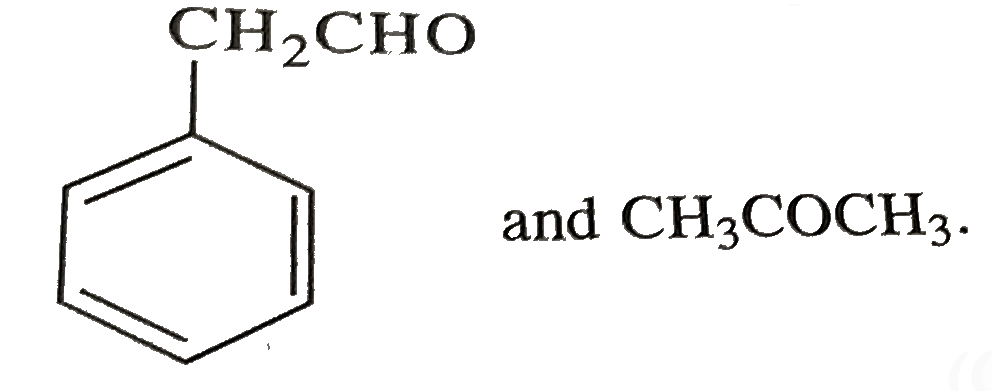Write a test to distinguish between:
hydrogen chloride and carbon dioxide
To distinguish between hydrogen chloride (HCl) and carbon dioxide (CO2), we can perform two specific tests based on their chemical properties.
Step 1: Test for Hydrogen Chloride (HCl)
1. Take a glass rod and dip it into a concentrated ammonia solution (NH3).
2. Bring the rod close to the gas sample.
3. Observe the formation of white fumes or a white solid deposition on the rod.
Explanation:
If the gas is hydrogen chloride, it will react with ammonia to form ammonium chloride (NH4Cl), which appears as white fumes or a white solid. This indicates the presence of HCl.
Step 2: Test for Carbon Dioxide (CO2)
1. Take a sample of the gas and pass it through limewater (a dilute solution of calcium hydroxide, Ca(OH)2).
2. Observe the color change of the limewater.
Explanation:
If the gas is carbon dioxide, it will react with limewater to form calcium carbonate (CaCO3), which is insoluble and will cause the limewater to turn milky. This indicates the presence of CO2.
Conclusion:
- If you observe white fumes or a white solid on the rod, the gas is hydrogen chloride (HCl).
- If the limewater turns milky, the gas is carbon dioxide (CO2).
---
1. Take a glass rod and dip it into a concentrated ammonia solution (NH3).
2. Bring the rod close to the gas sample.
3. Observe the formation of white fumes or a white solid deposition on the rod.
If the gas is hydrogen chloride, it will react with ammonia to form ammonium chloride (NH4Cl), which appears as white fumes or a white solid. This indicates the presence of HCl.
1. Take a sample of the gas and pass it through limewater (a dilute solution of calcium hydroxide, Ca(OH)2).
2. Observe the color change of the limewater.
If the gas is carbon dioxide, it will react with limewater to form calcium carbonate (CaCO3), which is insoluble and will cause the limewater to turn milky. This indicates the presence of CO2.
- If you observe white fumes or a white solid on the rod, the gas is hydrogen chloride (HCl).
- If the limewater turns milky, the gas is carbon dioxide (CO2).
Topper's Solved these Questions
- BOOK - ICSECHAPTER - STUDY OF COMPOUNDS - STUDY OF HYDROGEN CHLORIDE (HCL)EXERCISE - QUESTIONS FOR PRACTICE36videos
STUDY OF COMPOUNDS - STUDY OF HYDROGEN CHLORIDE (HCL)
- BOOK - ICSECHAPTER - STUDY OF COMPOUNDS - NITRIC ACID EXERCISE - UNIT TEST PAPER 7 C - NITRIC ACID27videos
STUDY OF COMPOUNDS - NITRIC ACID
- BOOK - ICSECHAPTER - STUDY OF COMPOUNDS - SULPHURIC ACID EXERCISE - UNIT TEST PAPER 7D - SULPHURIC ACID31videos
STUDY OF COMPOUNDS - SULPHURIC ACID
Similar Questions
Knowledge Check
- Question 1 - Select One
carbon in carbon dioxide is
Asp2- hybridisedBsp3 d - hybridisedCsp- hybridisedDsp3 - hybridised
Give chemical test to distinguish between
 View Solution
View SolutionGive a test to distinguish between aldehyde and ketone.
View SolutionWrite a chemical test to distinguish between :
Chloroform and carbon tetrachloride.View SolutionGive chemical tests to distinguish between:
Propanone and propanalView SolutionGive a chemical test to distinguish between the following:
Ammonium chloride and sodium chloride.View SolutionWrite one chemical test to distinguish between phenol and benzoic acid.
View SolutionWrite one chemical test to distinguish between phenol and benzoic acid.
View Solution


